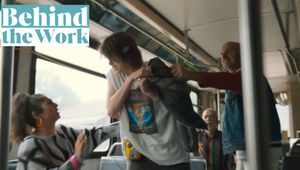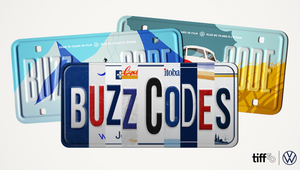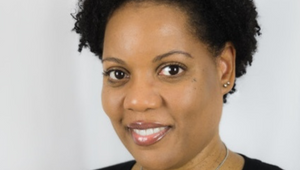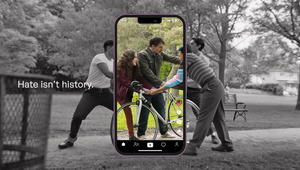
How This Lottery Company Allowed Canadians to View Horse Racing as They Never Had Before

How much do you know about horse racing? In Canada, it might not have the traditional brand presence of hockey or basketball, but yearly, it’s actually a significant driver of the national economy. In fact, not only does the sport serve as a reminder of the country’s agricultural heritage, it leads to the creation of thousands of jobs, and, moreover, generates billions of dollars in economic activity.
This is undoubtedly true in Ontario. But, as Ontario Racing knows, what viewers see only scratches the surface of what horse racing actually is. There’s the training, the caring for horses, and all that background stuff which significantly impacts the outcome of race day… that nobody ever gets to see, and casual fans probably don’t know about. For this reason, Ontario Lottery and Gaming Corporation (OLG), creative agency TAXI and director Jeremy Grant partnered up to give interested parties the full experience, launching ‘Unfiltered’, a five-episode docuseries which is live organically on Crave, and is also available for streaming on TSN.ca and TSN’s YouTube channel.
“The campaign is supported by a targeted media strategy applying custom audience segments to drive viewership and engagement,” says Lisa Kahn, executive director of planning at EssenceMediacom. “Support includes Linear TV, OOH, paid social, Amazon Fire TV, Apple TV, Xbox and Chromecast as well as five custom segment integrations on CP24 that will highlight behind-the-scenes footage with driver interviews.”
LBB’s Josh Neufeldt sat down with OLG’s brand and sponsorship marketer, Maxine Chapman, TAXI Toronto executive creative director Frank Macera, and Jeremy Grant, exploring what it took to capture the sport in all its authentic glory.
LBB> How did the idea for ‘Unfiltered’ come to pass? And as a whole, why is the relationship between OLG and Ontario Racing so significant?
Maxine> Horse racing is a vital part of Ontario’s history. OLG works in close partnership with Ontario Racing to help strengthen the industry for the more than 24,000 Ontarians directly involved in the sport. The idea for ‘Unfiltered’ stemmed from the findings in research we recently conducted to help understand our audience. Through our marketing efforts, together, OLG and Ontario Racing are helping to create awareness and interest in horse racing as an exciting entertainment option, close to home.
LBB> How did things get started from there? What was the brief, and what immediate ideas came to mind for the creative execution?
Frank> The brief was about getting more people to see horse racing as an entertainment option – a way to enjoy a night out with friends. In the past, this was always done by showcasing the excitement of a race via 30-second TV ads, and we had campaign ideas that had great 30-second TV features as part of them. But, we also brought the idea of the docuseries. As we talked about horse racing, we found ourselves watching more and learning more and we hit on the notion that if we wanted to get people to see horse racing as an entertainment option, we needed to pull them into the sport first – to immerse them in the world of horse racing. A horse race is only two minutes long and it’s really 1% of the action in the sport. We wanted to show people how interesting the human stories and the other 99% of the action that happens before and after a race can be.
LBB> Taking viewers through Ontario’s horse racing industry is no small task. How did you approach this from a writing perspective?
Frank> The real first step was hiring a great production partner and director who knew this world, and Jeremy Grant from Bug Content was the perfect choice. Working as a group, (TAXI, OLG, Ontario Racing, and Jeremy), we did several things immediately. We started on the human level (and storytelling level) instead of the racing level, and identified characters in the sport so that we could have interesting people and stories to follow. A jockey who’s fairly new to the sport, a pair of very successful jockeys with a great friendly rivalry between them, a trainer who was so allergic to horses as a child that it put him in the hospital, a jockey who’s new to Canada, the most successful female jockey in Canadian history, etc.
Then, we looked at the horse racing calendar and identified key races that we might want to film in order to follow some of these characters, after which an outline started to take shape, where we could introduce the two types of racing, (standardbred and thoroughbred) and follow these characters through their journeys in different races all leading up to the King’s Plate (formerly the Queen’s Plate) in August.

LBB> Building on this, Jeremy, why was it something that you were keen to get involved in?
Jeremy> When I first saw this script, the courage behind it immediately pulled me in. With most commercials, it's about guaranteed outcomes and storyboarding every frame, and this was a script rooted in documentary. The beauty of the concept, and sport in general, is that there is a certain mystery, where the only guarantee is that it will be exciting. At Bug, we are huge fans of collaboration and community, and this project would take a lot of both to pull it off.
LBB> How did this development process compare to making something like a traditional ad?
Frank> On a fundamental level, it’s not so different. We needed a great insight, a great idea, and great storytelling. On a practical level it’s quite different. All traditional advertising is collaborative on some level, between agency and client. This was an incredibly ambitious project and required an incredible amount of true collaboration between agency, client, production, and media partners, and the real people whose stories we were bringing to life. So creatively, the team felt much bigger, in a great way. Everyone had their area of expertise, and had to work in harmony just to start to put plans on paper, let alone film anything.
Jeremy> One of the major differences is that the story is going to evolve in real time. There is still a tremendous amount of prep that goes into each shoot day, but you have to be fluid enough to follow the stories when they head in unexpected directions. It is important to tell the story honestly with as little influence as possible. That was true of all of our camera operators. We were able to assemble a dream team that was really adept at reading the room and catching those lightning in a bottle moments.
LBB> How long did it take to shoot, and what was the experience like?
Jeremy> We shot five 15-minute episodes over the span of four months, and the experience was incredible! It takes a lot of work to build those relationships with athletes, but when you experience their season with them - the highs, the lows - you become like family. You're trying not to shake the camera by jumping up and down when they win, and trying not to get too bummed out when they lose. Documentary is a very special space because it has to be ‘real’. The audience can tell if it's not.
Frank> There are some very memorable stories, but most of them are spoilers for the series, so I’m going to let people watch for themselves. Truthfully, one of the most memorable stories is more of an overall impression than a story, and it’s seeing the amount of work that goes into horse racing in Ontario. We were on a trainer’s property one day during a terrible thunderstorm. A lightning strike we captured made it into our 60-second ad. Anyway, the show had to go on for these trainers, so when there wasn’t lighting, there was work to do outside no matter how hard it was raining. They’re up at five in the morning to care for the horses… every day. The jockeys are up early to hit the gym. Horse racing is a two-minute race to people watching, but for the people behind the scenes, they love it so much that it’s literally their lives.

LBB> And what was actually capturing the horse racing like? Did you need special equipment for this?
Jeremy> When I came into this, I had worked for two decades in underdog sports, from bike racing in rural Zambia to snowmobiling in Alaska, but never horse racing. There’s always lots to learn, and if sport teaches you anything, it's that you have to be humble and remain a student no matter how many years you've done it for. Having said that, it's also very similar to so many sports I've shot in the past. Beyond all the rules and technical details, your job at the heart of it is the same - find the human amongst all the superhuman achievements - and horse racing is riddled with David versus Goliath stories. You just have to know how to pull them out.
In terms of gear, we shot with the RED series cameras. They are great cameras with a lot of latitude that are also lightweight enough to carry on your shoulder for a day. Overall we tried to travel as light as possible while still incorporating multiple looks. The agency and our client were excited about incorporating a variety of formats, which really increased our chances for success because it meant that everything from the live feed at the track to footage shot on a phone was in play. You also see a lot of GoPro footage throughout. We wanted to show the raw power and speed that only the drivers can really experience first hand. GoPros were instrumental in achieving that.

LBB> Were there any shots that were especially difficult to get? And why?
Jeremy> Definitely those beautiful slow motion details from the races. We were extremely fortunate to have with us one of the premier sports action DPs in North America, Clay Porter. After looking at previous horse racing coverage, it's usually shot wide and safe because it's such a challenging sport to shoot. Clay was able to get these shots of the horses in full sprint with just their eyes or nostrils in focus. It was such beautiful imagery that highlighted the majesty of these incredible animals.

LBB> When it came to aesthetics and the look and feel, what were your main aims and ambitions and how did you achieve them through lighting and colour?
Jeremy> We knew we wanted to highlight not only the glamour of the sport, but also the blue-collar grit of it. We also knew that we had to work with available light. Luckily, so much of the sport exists at blue hour, from training the horses as the sun rises to racing each evening as the sun is setting. We leaned in, set our alarms early, and got some stunning images that lent to the mood of the series.
I’m glad you brought up colour though! When you’re using all of these different looks, you need really strong post partners to carve out an overarching look that is balanced and nuanced. We were really fortunate to have Alter Ego as one of our post partners on this project, and our colourist, Andrew Ross, was outstanding. I hate to keep bringing it up, but we really did have an incredible team of people working on this. Alongside Alter Ego, we had School Editing on the offline edits, and Cassette Sound Studios Inc. as our sound engineer.

LBB> What challenges have you faced during this project? How did you overcome them?
Frank> The biggest challenge was navigating the unknown. There was not knowing what would happen in the next race - or even the next day in the lives of our characters - to not knowing exactly what the edit would look like. However, the way we overcame that is through true trust and partnership with everyone involved. We all decided to do this very ambitious project together, and all buckled in for a fun ride.
Jeremy> The biggest challenge compared to traditional commercials is that on a commercial, the shoot is the most important thing happening, and everything revolves around it, but with a series like this, the sport takes priority. You have to respect it, work within it, and elevate it. You are there in service of it and not vice versa. It’s like surfing - you can’t tell the waves when to come, you just have to keep looking over your shoulder and know when to start paddling.
Maxine> The biggest challenge we faced during the production was choosing which stories to highlight. There are so many good stories to share within the industry. We did our best to highlight the talented human and equine athletes, and we look forward to showcasing more of these stories in the future.
LBB> What has the initial response been like? Are people enjoying the series?
Frank> The initial response has been amazing – from every group. We frequently hear from our clients about how much people who work at the different racetracks in Ontario love the series. ‘Unfiltered’ is the number one horse racing docuseries in Canada, and even outside the sports world, it’s listed among the top docs, period, on Crave. Personally, I’ve heard from lots of people inside and outside the ad industry who are big fans too. Plus, my mom watched it and said it was ‘interesting’, which, if you know my mom, is like a 15/10 from anyone else.
LBB> How does this series fit into OLG’s brand goals for 2023 and beyond?
Maxine> The brand goals for the campaign are directly tied to driving awareness and interest in horse racing. The campaign has only been in-market for two months, and we look forward to measuring its impact and overall results over a longer period.
LBB> Do you have a favourite episode, or an aspect of this project you are most proud of?
Frank> Outside of creating truly great branded content and shining a light on genuinely interesting stories that usually go unseen, the part that I’m most proud of is the level of execution. I’m also proud of the partnership that’s been required for this level of execution. It’s a kind of collaboration that you don’t see every day. When I watch the series, it looks like a world-class docuseries. Executing at that level means that our audience is experiencing horse racing as well as we could possibly do it, and gives us the best opportunity to give people a new perspective on it.
Jeremy> Every episode has something I love, from the emotion in Emma's eyes when she says, ‘You can't take that away from me’ about becoming the first woman to win the Queen's Plate, to how Doug refuses to order an Americano coffee for a camera operator because ‘Here in Canada, us harness drivers drink double-doubles’. The series is packed with not only amazing racing stories, but also human stories, and we've just scratched the surface - the sport has so many more stories I’d love to tell.
Maxine> I love them all. Each episode shows a new side of horse racing that most viewers will have never seen before. Watching the stories unfold and learning more about the characters is great, but the horses are the real scene stealers – each has their own unique personality.















